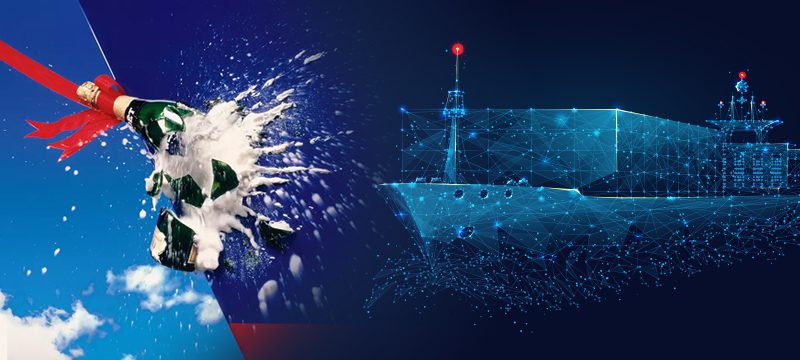Time to Break the Champagne Bottle on the Digital Prototype
What is a digital prototype?
Beyond being a collection of 2D and 3D models, a digital prototype provides the ability to overlay other vital statistical and behavioral data to simulate functionality at sea. The digital prototype of a ship can literally behave as though it were the real physical thing and has the advantage of being able to simulate scenarios that would be far too dangerous to recreate in the real world.
We would reason that the digital prototype is actually the first ship being built. It is ship #1 whereas the physical asset is ship #2. In fact, ship #1 is so important, it is used to model the manufacturing process for ship #2.
So why are digital protypes banished from the hero’s party?
The problem with developing digital prototypes is they are data intensive, expensive, and a never-ending endeavour. Today, with hundreds of people working in siloed departments across a shipyard, the only thing that seems to galvanize everyone is the cutting of the first piece of steel.
We realize, in the short term, developing a digital prototype is seen as very costly. It’s because we don’t have the collaborative systems in place to handle the data. Instead, we need to look long term. Afterall, the driving force behind innovation is investing in ways to do things better. So of course, a digital prototype that becomes a ship’s digital twin is a never-ending endeavour because we are always striving to improve.
Using Digital Prototypes to Avoid Rework
The potential for using digital prototypes to avoid rework is enormous. Instead of learning design mistakes after the ship has been built, the digital prototype can discover those flaws long before the first piece of steel is cut.
For example, having a 3D digital twin view of the inside of a ship’s engine room could allow you to optimize piping routes and view which systems emanate heat. By having a visual on anything that has the potential to get red hot, you can identify where insulation may need to be added in order to protect the health and safety of crew. The digital prototype could also be used to determine the size requirements of cargo bays in order to accommodate the installation of equipment or for Wi-Fi modelling, giving you the ability to increase and decrease coverage to control cost.
The potential of simulating a variety of different scenarios is boundless. Digital prototypes can accelerate the design phase of ship build by avoiding costly manual simulation and rework. It’s also not that much of a stretch to see how ship design flows into becoming the digital prototype and supports your organization’s business transformation to digital shipbuilding.
Celebrating the milestones of Ship #1
Because digital prototypes allow shipbuilders to optimize construction before the ship is built, we’re hoping to see our industry shift its mindset. It’s time to view the digital prototype as ship #1 and the physical asset as ship #2. It’s on ship #1 that a lot of the manufacturing issues are worked out. This means that ship #2 is comparable to being a sister ship. It can be built faster and at a higher quality because most of the bugs have been worked out.
In the near future, we predict shipbuilders will declare the start of the “build process” as beginning with the digital prototype. This is where the production team can be brought in to virtually walk through the building process, gain insight, optimize construction, and increase profit margins.
Now you have a digital performance twin
The beautiful thing is when digital prototypes are kept current, it becomes the digital performance twin and can live alongside the owner’s physical asset. Rather than try and reverse engineer and already built ship, this approach is just better. It lowers both the ship builder’s risk and the owner’s risk.
The digital twins are a long-term investment. If we fast-forward three or four years after the ship has been put into service, owners can feel confident they have a higher quality vessel and investing in growing their fleet becomes less daunting. For ship builders, we foresee fewer warranty claims and an opportunity to service the ship long into the future.
So, let’s get ready to break virtual champagne bottles over the digital prototypes from now on! If you think your organisation could benefit from bringing digital prototypes into the built process, please feel free to connect with us.





